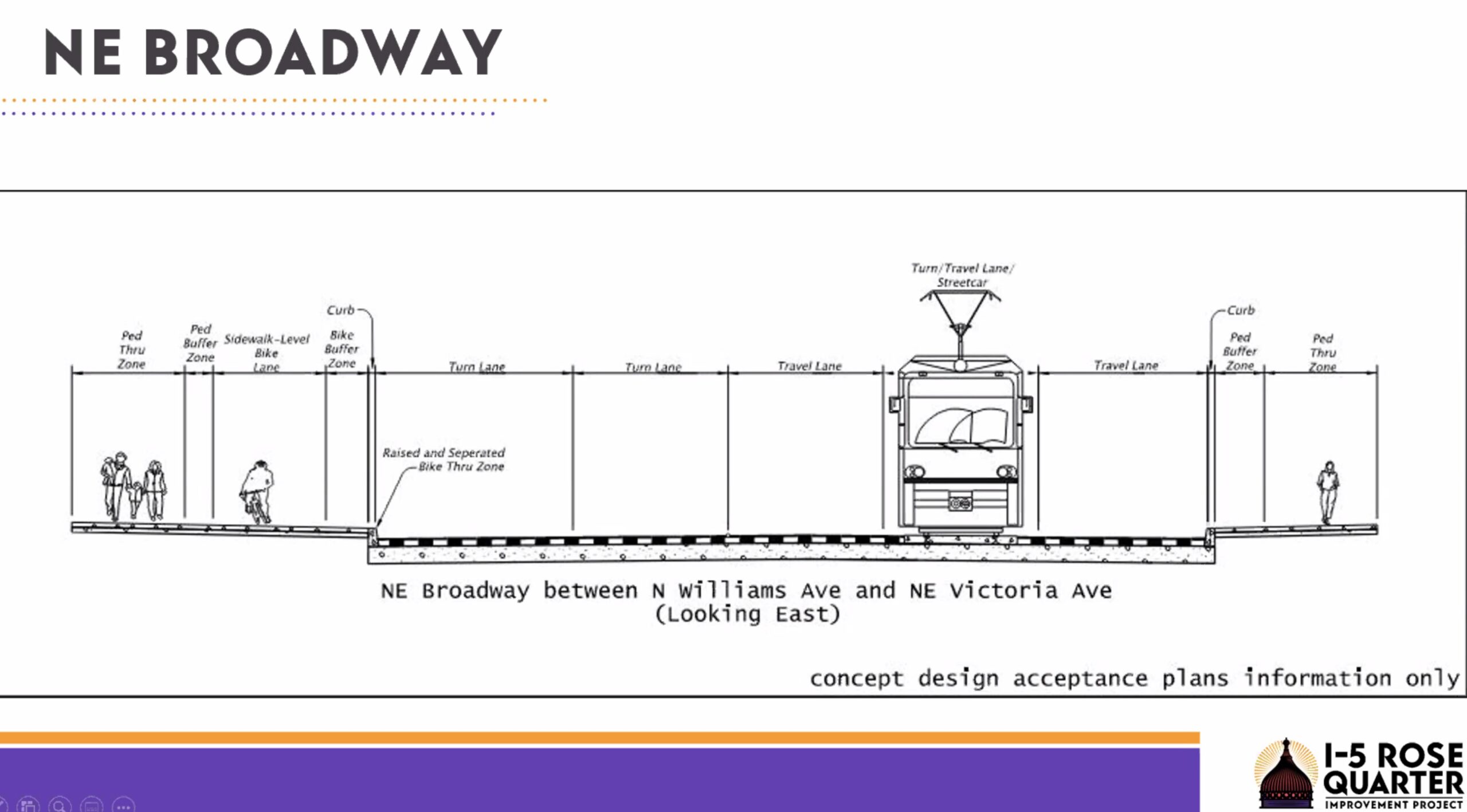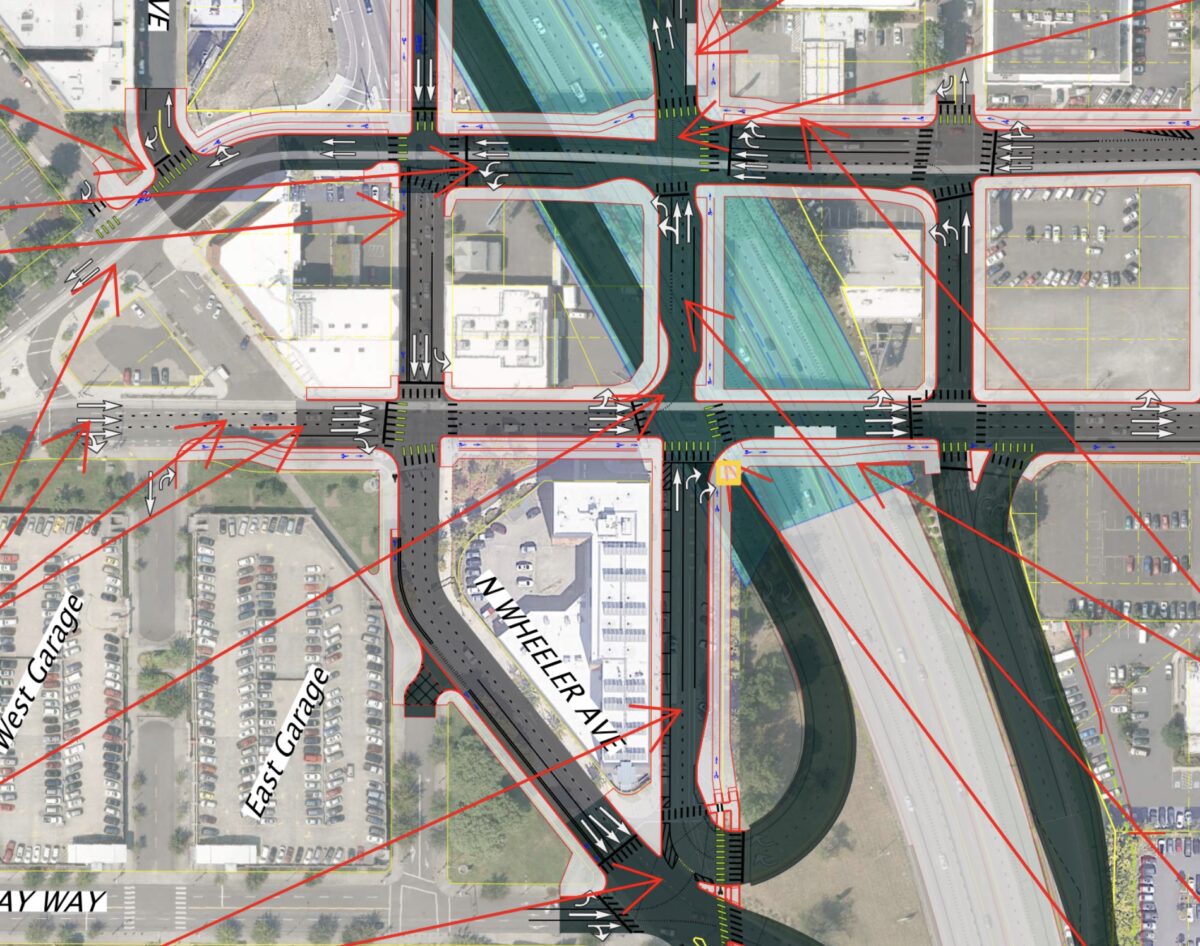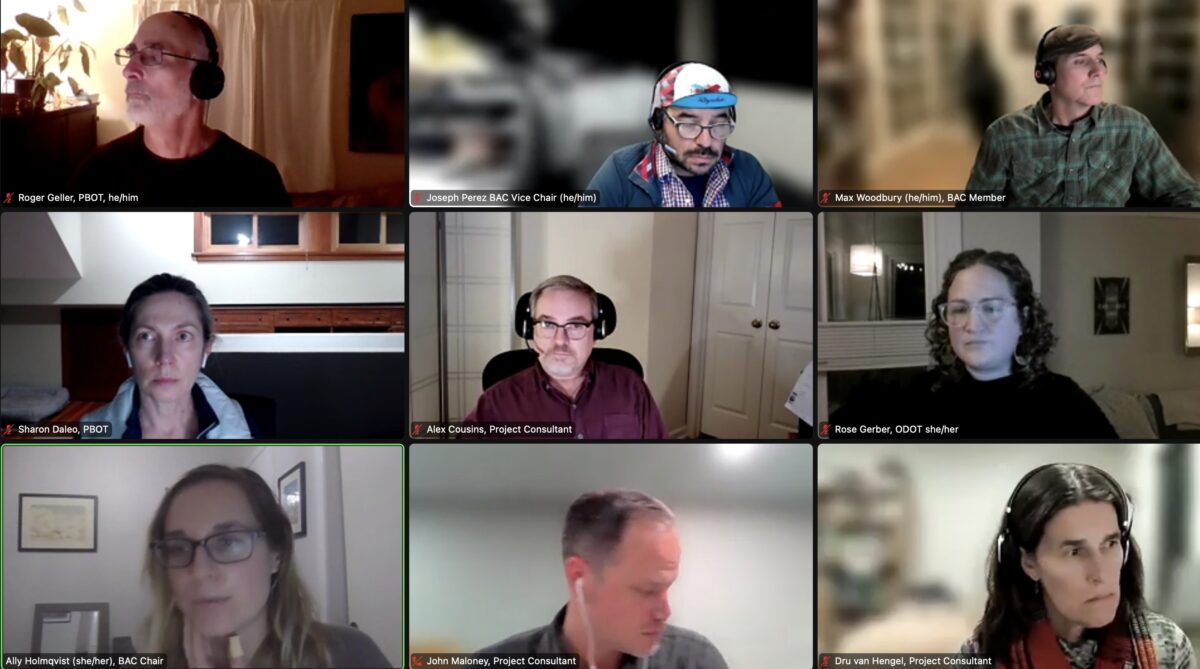“We know we have a lot of work to do… we need ODOT to shift from the typical auto-oriented focus.”
– Sharon Daleo, PBOT
Looking to reassure advocates about the I-5 Rose Quarter project, a City of Portland staffer told the Bicycle Advisory Committee meeting this week that it’s too early to panic and everything will be just fine.
On Monday we shared graphics from an unreleased draft of the Oregon Department of Transportation’s I-5 Rose Quarter Supplemental Environmental Assessment (SEA). The document is a requirement under federal law and it comes in response to a significant change in the project’s scope. After pressure from elected officials and advocates forced ODOT to include a much more robust highway cover (that would allow development on top of it) in the project, the state came up with what they call the “Hybrid 3” design option. The SEA takes a closer look at this design.
We received a copy of the SEA this week from advocates with No More Freeways who warned that ODOT’s first draft of surface street designs make conditions much worse for anyone outside of a car.
At the outset of her presentation at the BAC meeting Tuesday night, Portland Bureau of Transportation Rose Quarter Project Manager Sharon Daleo spoke directly to these concerns. “We know we have a lot of work to do,” she said. “We recognize that we need our partner ODOT to shift from the typical auto-oriented focus.”
It’s important to understand that PBOT walked away from this project two years ago and only re-engaged this past summer. That means ODOT (a more conservative and driving-centric agency) did nearly two years of project design and development without PBOT’s input or oversight. Now the city must play catch up. And because this project is deeply unpopular with a large swath of Portland’s transportation-focused electorate, PBOT has strong motivation to make sure the project — which will add lanes to a freeway — does not reverse climate and mobility goals.
With that context in mind, PBOT’s Daleo told BAC members that, “Our efforts are focused on finding a design that aligns with city policies and guidelines that prioritize equity and climate and those walking, rolling and taking transit.” Daleo repeatedly mentioned how PBOT feels there’s “flexibility” in the process going forward and tried to reassure people that the project will result in a net benefit.
Here’s more from Daleo:
“Our understanding of the Hybrid 3 purpose and intent was a design approach that shifts from an auto-focused street environment, to a pedestrian-oriented system that prioritizes pedestrian safety and experience — making the streets around new development opportunities and highway covers to be more people and business friendly, with less I-5 traffic circulating through the area.”
Importantly, Daleo referenced an intergovernmental agreement (IGA) between ODOT and PBOT that includes not only more public outreach but also a requirement for ODOT to return to Portland City Council for approval in 2024. She also said PBOT feels Oregon Governor Kate Brown’s memo from August gives them significant power to re-evaluate ODOT’s designs.
The SEA is ODOT’s interpretation of the Hybrid 3 option, but according to PBOT, the City of Portland will have final review and approval of how the surface streets are designed. Keep in mind however, that in the end this is an ODOT project. Daleo made it clear (at one point even correcting herself) that PBOT can only “analyze” the designs and does not have the power to “develop” them.
Dru Van Hengel, a project consultant from planning firm Nelson Nygaard (who also sits on The Street Trust Board of Directors), also aimed to reassure BAC members. “This design is far enough along for [federally required] environmental evaluation. There are many details still to explore, review and approve.” Specifically, Van Hengel said they will start design conversations with protected bike facilities. And when it comes to some of the scary highway ramp exposures on Williams we pointed out on Monday, she said, “We’re looking to reduce the extent of the crossing exposure both for people walking and biking.”


Since the route of the Green Loop will be retrofitted to the Broadway-Weidler couplet (busy streets that currently have terrible bikeways), Van Hengel sought to assuage concerns by showing a cross-section for what’s to come. The drawing showed physically-separated and raised facilities that will have shorter crossings, striping and bike-only signals at intersections. “We will be looking to make the Green Loop the best it can be given where it will be in the project area,” she said.
This is all part of a very tricky dance we’ll watch closely in the coming months and years as PBOT and ODOT awkwardly try to satisfy their respective constituents and complete this project. The city and state are co-dependent: ODOT needs PBOT’s support to make the politics pencil out; PBOT needs the project to get built so they can implement more dense development on freeway-adjacent parcels that requires ODOT’s approval.
ODOT expects the FHWA to make a final decision on their environmental analysis in spring 2023 and, if all goes according to plan, crews would break ground later that year. Major construction would then begin in 2026 and the project would be complete by 2030. ODOT will release the SEA to the public and launch an open house any day now.




